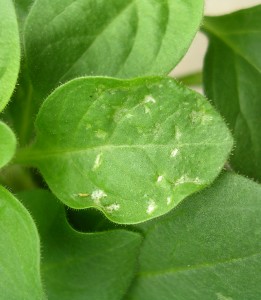Cicada Killers Are on the Wing
North Carolina’s steamy July days bring out some of our most spectacular solitary wasps. These sleek and streamlined hunters …


El inglés es el idioma de control de esta página. En la medida en que haya algún conflicto entre la traducción al inglés y la traducción, el inglés prevalece.
Al hacer clic en el enlace de traducción se activa un servicio de traducción gratuito para convertir la página al español. Al igual que con cualquier traducción por Internet, la conversión no es sensible al contexto y puede que no traduzca el texto en su significado original. NC State Extension no garantiza la exactitud del texto traducido. Por favor, tenga en cuenta que algunas aplicaciones y/o servicios pueden no funcionar como se espera cuando se traducen.
Inglês é o idioma de controle desta página. Na medida que haja algum conflito entre o texto original em Inglês e a tradução, o Inglês prevalece.
Ao clicar no link de tradução, um serviço gratuito de tradução será ativado para converter a página para o Português. Como em qualquer tradução pela internet, a conversão não é sensivel ao contexto e pode não ocorrer a tradução para o significado orginal. O serviço de Extensão da Carolina do Norte (NC State Extension) não garante a exatidão do texto traduzido. Por favor, observe que algumas funções ou serviços podem não funcionar como esperado após a tradução.
English is the controlling language of this page. To the extent there is any conflict between the English text and the translation, English controls.
Clicking on the translation link activates a free translation service to convert the page to Spanish. As with any Internet translation, the conversion is not context-sensitive and may not translate the text to its original meaning. NC State Extension does not guarantee the accuracy of the translated text. Please note that some applications and/or services may not function as expected when translated.
Collapse ▲North Carolina’s steamy July days bring out some of our most spectacular solitary wasps. These sleek and streamlined hunters …

At least one fungicide application for leaf spot has been made to most of the peanut crop by now. …

Impatiens necrotic spot virus (INSV) affects ornamental greenhouse crops like impatiens and mums but also many vegetables and herbs. The …

Trap data is collected from around North Carolina and aggregated by County. This week trap data for additional counties was …
Maybe you have already found the relatively new (at least to me) Extension Resource Catalog. This is a huge …
Originally posted on ecoIPM.org. Mimosa webworms are active in Raleigh. I saw initial webbing this week. These are annual pests …
Originally posted on ecoIPM.org Every year around this time I get calls and emails from homeowners and landscapers who notice …

Basil downy mildew has been reported in North Carolina. Growers are advised to actively scout for the disease and …

Programs to prevent and control early (Figure 1) and late leaf spots (Figure 2) will begin soon. In well …

The trap data is collected from around North Carolina and aggregated by County. Additional counties will be added as the …
Originally posted on ecoIPM.org Things are heating up and the twospotted spider mite, Tetranychus urticae, thrives in hot dry weather. …
Originally posted on ecoIPM.org It seems like everything is labeled ‘next generation’ or ‘second generation’ to imply a better, more …
Originally posted on ecoIPM.org I was in Northwestern Pennsylvania last week and found tulip poplar trees with leaves that had …

Written by Emma Wallace and Dr. Lina Quesada-Ocampo Downy mildew of cucurbits, a critical disease on cucumbers, has been reported …
Hibiscus sawfly, Atomacera decepta, is a common pest of hibiscus. Not much is known about this critter from what I …

Potato late blight, caused by the oomycete Phytophthora infestans, was reported this week from a sample from eastern North …
Originally posted on ecoIPM.org… You can often see hoverflies zipping in and out of flowers in your garden. They approach …